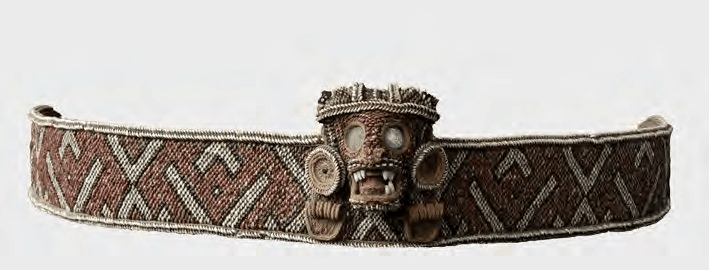Un mundo que descubrió Colón: las rutas del comercio prehispánico de los metales by Adam Szaszdi Nagy is a fascinating work endeavoring to understand precolonial trade in metals (and shells, slaves, salt, emeralds, and semiprecious stones) across the Americas. Beginning in the Antilles, where Columbus was first informed of places with gold, guanin and precious metals, Nagy takes the Indian guides and informants seriously for testimony on long-distance trade. Guanin, for instance, the gold-copper alloy so highly treasured by the Taino for pectorals and adornment, was indeed acquired through long-distance trade with South America. Guayana, or Guayana, was likely one of the areas from which guanin (also known as caracoli to the Caribs) spread to the Antilles, perhaps through an exchange of slaves. In addition to guanin and other worked metals, the Antilles was also part of an exchange network that connected all the Americas.
Shells, jadeite, emeralds, salt, slaves, copper, silver, turquoise and textiles connected North and South America via maritime routes through the Caribbean and across the Pacific. Indeed, Nagy draws on evidence of widespread similar uses of guanin for pectorals and nose pieces in the Antilles, Colombia and Central America to posit a long-lasting network of trade. In addition, the ultimate sources of the techniques for advanced metallurgy appear to have first arisen in Peru and Ecuador, from which they spread to Colombia (the Quimbaya, Muisca, Sinu, and Tairona cultures). Then, via trade routes that traveled along South American rivers and overland, guanin or tumbaga reached the Antilles, Mesoamerica, and beyond (as Florida seems to have received some items of South American origin via the Antilles).
While Nagy seems to uncritically accept some Spanish sources as valid on the cannibalism of the Caribs or those of the Colombian Cauca valley, he interprets them carefully elsewhere to establish the skill and longevity of contact and trade in the Americas. For instance, the Taino of the Greater Antilles told Colombus, Chanca and others of their trade contacts with the mainland (Zuania, or Guania?). Elsewhere, indigenous informants in 16th century Mexico reported the visit of long-distance traders via the sea to the Pacific Coast of Mexico, which is probably evidence of trade contacts with coastal Ecuador. Was there indeed a movement of specialists in metallurgy from Ecuador to Mexico due to Inca expansion in the 15th century is difficult to say with the sources used, but certainly possible. Likewise, Raleigh and others on Guayana indicate how the long-lasting trade in guanin continued as late as the end of the 16th century in South America. Furthermore, was el Turco, the man encountered in the Southwest by Coronada, really a native of Ecuador? Nagy's evidence is insufficient, but certainly suggestive of ancient contacts via trade between Ecuador and Mexico as natives of Ecuador's coast traveled in balsas with sails.
One wishes more could have been uncovered on direct Taino trade with Colombia and Venezuela without the Carib or Lesser Antilles intermediaries. Nagy argues that Cuba lacked close trade links with the Yucatan and Central America due to the lack of sufficient trade goods that would have attracted merchants from the mainland. But Jamaica, where a cacique's regalia impressed Columbus and resembled that of Indian populations in parts of Panama and Columbia, would presumably have lacked goods to exchange with the mainland, too. Unless, perhaps, captives or carved, wooden objects of Taino artisans attracted a market in the mainland? And what if, contrary to Nagy, the Taino were cultivating cotton in sufficient quantities to export it to the mainland, and trading directly with the coast of Colombia as well as Venezuela?

No comments:
Post a Comment